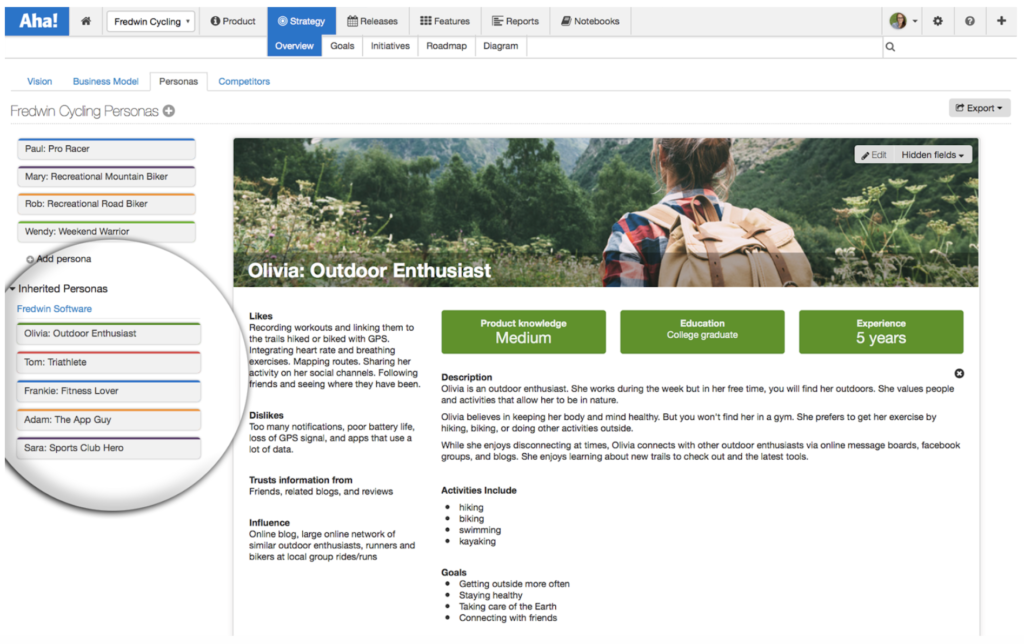
4 Marketing Best Practices for Creating Customer Personas
Everyone loves a good story, right? And if you are a marketer, you are telling meaningful stories every day — whether you realize it or not. The messaging you write, the advertisements you create, and the content you publish. But like any good storyteller, you need to understand what will appeal to your audience.
This is where personas come into play. The literal definition is “a character assumed by an author in a written work.” In the marketing world, these are a blend of data and insights about the people who influence or make decisions about your product or service.
You should take the time to create personas to better understand who your customers are, what they need, and how you can help solve their problems.
Personas bring your customers to life so you can make better, more informed decisions and investments. To get started, you need to understand the various personas that are most important to create.
If you work for an enterprise SaaS company, these personas will likely include a buyer, user, and maybe even a key technical member. Think about all the decision-makers — the people who use and are responsible for procuring your product. This includes those who handle billing, vet your software for security, and then the end-users who rely on your product every day.
For example, at a large company, a product manager (the user) could request that the procurement person (the buyer) purchase the product on their behalf. They then have to get approval from IT and operations (the security) before moving forward. Once purchased, the product manager may need to get budget approval to renew for another year. It is a cycle of decisions and cooperation.
Historically, personas were not as commonly used as “customer segments.” Customer segments considered individuals as part of a larger group and aggregated them based on basic facts — location, demographics, etc. While this information can be helpful, it is not enough to truly understand individual customers. You need to go deeper.
Here are four best practices for creating the most useful customer personas:
Talk to customers Do your market research. Sending out surveys or talking to sales can help a bit, but your best strategy will always be going straight to the source — customers and prospects. Talk with them and the people who serve them every day. You and your team should engage with customers often (even if you are nothing like them or do not use your own products). This could be via support calls, customer demos, or more formal user interviews.
Be curious The key is asking customers the right questions. And that starts with a deep sense of curiosity. Ask the following questions to help you better understand their motivations and challenges:
What is the real problem you are trying to solve?
How have you tried to solve it before?
Why did you choose our product to help you solve it?
Has it worked?
What could the product do better to help you?
What would you have liked to know before you selected our product?
Build a template You might have anywhere from two to five customer personas, but each one should follow the same template for consistency and ease of interpretation when you share them internally. This ensures that you are collecting the most valuable information on each persona. Using a tool like Aha! makes it easy to create and update these templates in minutes.

If you are not using Aha! yet, you can get started with a more lightweight customer persona template. Use Microsoft Excel or even a wiki to capture what you learn. You do not need to write a novel — use the image above as a guide for length. The idea is to be able to absorb the most important information that gives you the greatest insights at a glance.
Below is an example of a customer persona template that you can copy to get started if you are not using Aha!
Name | |
Education | |
Experience | |
Product knowledge | |
Influences | |
Likes | |
Dislikes | |
Responsibilities | |
Challenges | |
Skills | |
Trusts information from |
Link personas to feature requests If you or your colleagues are involved in building the product or service, it is helpful to link your defined personas to features that are being prioritized — so everyone knows why the user stories matter. Whenever an idea or a new feature is added to the roadmap, simply tie it to the corresponding persona. Aha! makes it easy to create a link between your personas and the features or updates that are designed to delight them.
When you know who your customers are, what motivates them, and what they are trying to accomplish — you can view challenges with a fresh perspective.
Bringing your customer personas to life brings clarity to your work and confidence in the marketing programs you are running. So, put in the effort to understand them. And prove that you do by writing down what you have learned so you can share it with the team.
It is a story they will want to read. After all, these characters are the ones who make your job possible.
What are your best practices for creating customer personas?
The road to building better product starts here.


